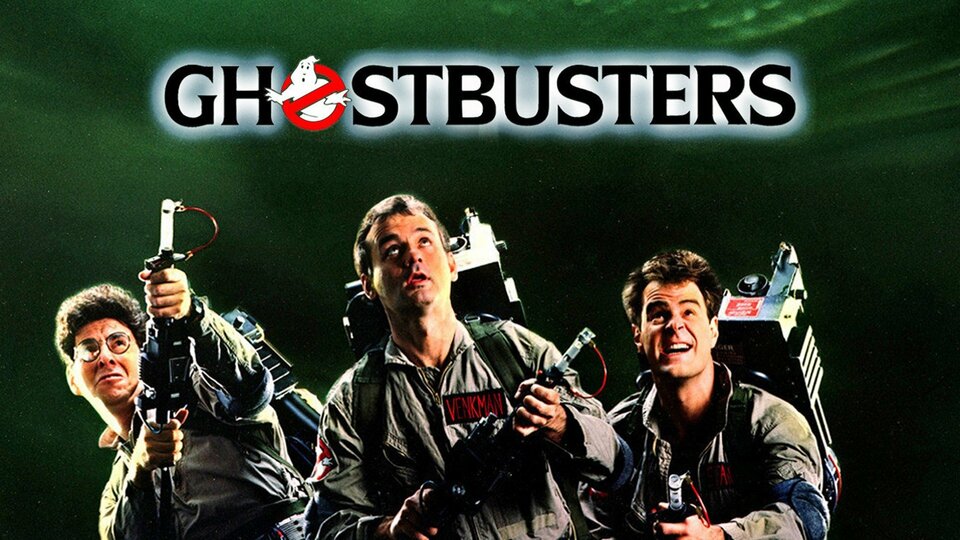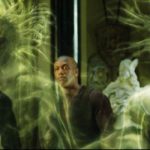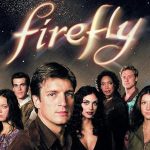Ghostbusters (1984)

“Ghostbusters,” released in 1984 and directed by Ivan Reitman, is a landmark film that seamlessly blends supernatural horror with comedy, creating a unique cinematic experience that has left an indelible mark on popular culture. Written by Dan Aykroyd and Harold Ramis, the film introduces audiences to a world where the paranormal is not only real but also commercially viable, leading to a delightful and humorous exploration of ghost hunting.
The film centers around a group of parapsychologists—Peter Venkman (Bill Murray), Ray Stantz (Dan Aykroyd), and Egon Spengler (Harold Ramis)—who, after losing their university jobs, decide to start their own ghost-catching business in New York City. This premise sets the stage for a mix of science fiction and comedic antics as the trio navigates the challenges of their unconventional profession. Each character is distinct, bringing a unique personality and perspective to the group dynamic. Venkman’s sarcastic charm, Ray’s enthusiastic optimism, and Egon’s scientific rigor create a well-rounded ensemble that captivates viewers.
From the outset, “Ghostbusters” employs a blend of humor and supernatural elements that keeps audiences engaged. The film’s humor often arises from the characters’ interactions with the absurdity of their situation. Bill Murray’s portrayal of Peter Venkman is particularly noteworthy; his deadpan delivery and witty one-liners elevate many scenes, making him a memorable anti-hero. The comedic tone is further enriched by the film’s clever writing, which balances the lighthearted moments with genuine stakes.
One of the film’s standout features is its imaginative take on the supernatural. “Ghostbusters” presents a world where ghosts are not merely frightening entities, but rather characters with their own quirks and personalities. This approach not only adds depth to the narrative but also allows for creative and humorous scenarios. For example, the iconic scene featuring the Slimer ghost, who becomes an endearing character rather than just a source of horror, exemplifies this unique perspective. The film’s portrayal of ghosts as both terrifying and comical resonates with audiences, making the supernatural accessible and entertaining.
The visual effects and production design of “Ghostbusters” also play a significant role in establishing its distinctive atmosphere. The film’s art direction combines elements of horror and humor, from the eerie ambiance of the haunted locations to the whimsical design of the Ghostbusters’ equipment. The proton packs and ghost traps, for instance, are imaginative inventions that contribute to the film’s science fiction elements while remaining rooted in the comedic tone. The special effects, especially for the time, successfully create a sense of wonder and fright, bringing the supernatural elements to life.

Moreover, the film features a memorable score composed by Elmer Bernstein, which enhances the overall experience. The iconic theme song, performed by Ray Parker Jr., has become synonymous with the film, contributing to its cultural significance. The catchy tune, with its infectious energy, perfectly captures the spirit of the film and has remained a staple in pop culture since its release. The score adds an additional layer of excitement to the film, further immersing viewers in the Ghostbusters’ adventures.

As the narrative progresses, “Ghostbusters” introduces significant themes, particularly regarding friendship, teamwork, and the battle against corporate greed. The bond between the Ghostbusters serves as the emotional core of the film, highlighting the importance of camaraderie in facing challenges. Their teamwork is crucial not only for their ghost-catching business but also in their ultimate confrontation with the malevolent spirit, Gozer, who threatens to destroy the city. The climactic showdown emphasizes the power of collaboration and unity in overcoming adversity.
The film’s villain, Gozer, and the subsequent showdown at the iconic New York City skyline serve as a dramatic climax that contrasts with the lighthearted tone of the rest of the film. The final confrontation between the Ghostbusters and Gozer showcases the film’s ability to merge thrilling action with comedic elements. The decision to use the Stay Puft Marshmallow Man as the physical manifestation of Gozer adds a layer of absurdity that is both humorous and memorable, further solidifying the film’s status as a cult classic.

In terms of cultural impact, “Ghostbusters” has transcended its original release to become a beloved franchise. Its influence can be seen in various forms of media, from animated series and video games to merchandise and sequels. The film’s ability to blend humor and horror has inspired countless filmmakers and comedians, cementing its place in cinematic history. It has also sparked discussions about the representation of scientists and entrepreneurs in film, presenting the Ghostbusters as unconventional heroes who challenge societal norms.

In conclusion, “Ghostbusters” remains a quintessential film that masterfully combines supernatural elements with humor, creating an entertaining and enduring cinematic experience. Through its memorable characters, imaginative storytelling, and cultural significance, the film has left an indelible mark on the landscape of American cinema. Its exploration of friendship, teamwork, and the balance between fear and laughter resonates with audiences of all ages. As we continue to encounter new adaptations and tributes to this beloved classic, it is clear that “Ghostbusters” will remain a cherished part of film history for generations to come. The film not only entertains but also invites us to embrace the unknown with a sense of humor, reminding us that even in the face of the supernatural, laughter can be our greatest weapon.











